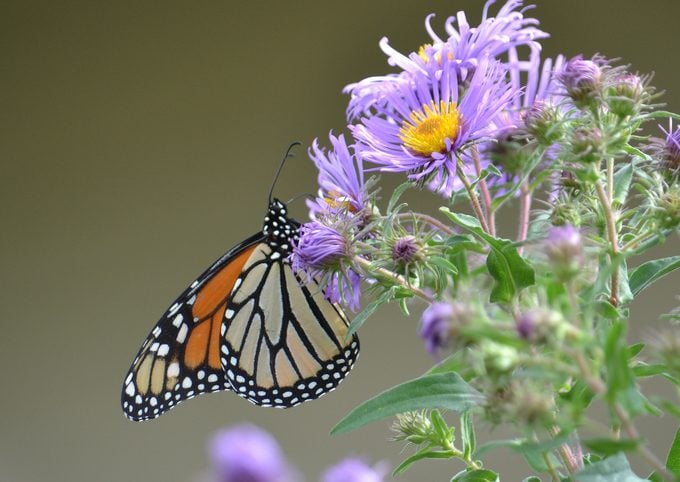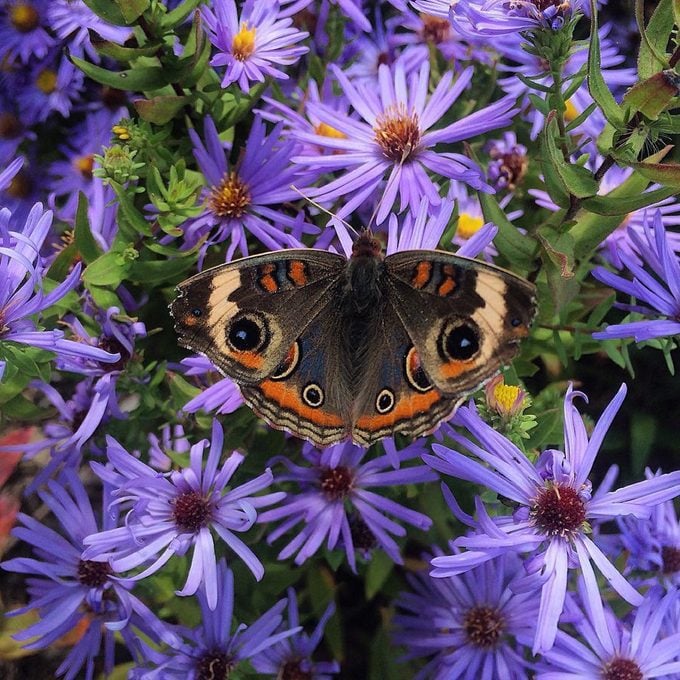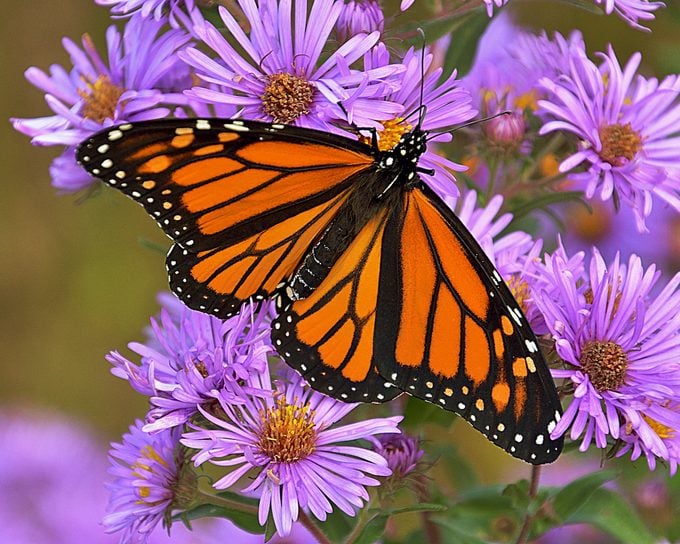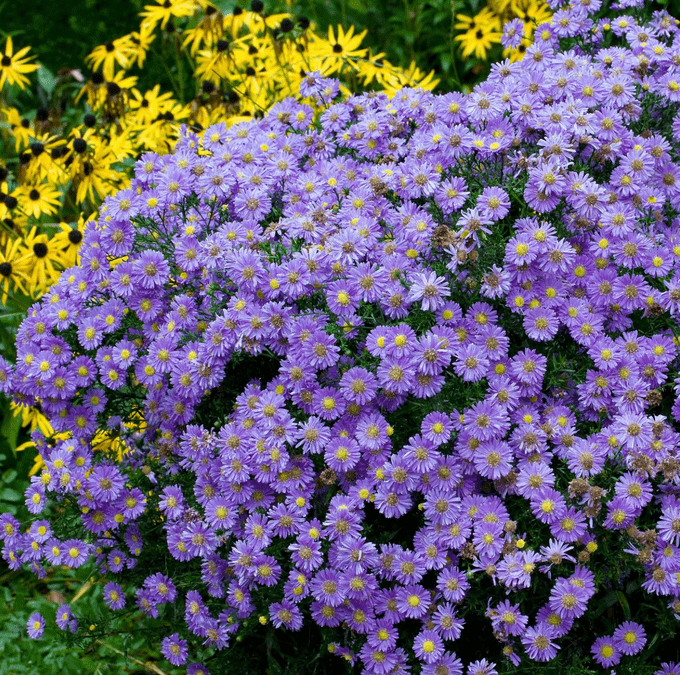New England Aster Care and Growing Tips
Updated: Aug. 16, 2023
Bring in beautiful butterflies and buzzing bees with New England aster. Learn how to add this pretty flower to your backyard.
How to Care for New England Aster

These pinkish-purple, daisylike flowers are sure to stand out in any garden! Native to North America with a range covering most of the United States and Canada, New England aster grows best in full sun and moist soil. The flowers bloom from August through October, making it an excellent late-season choice for gardeners looking to add color to their gardens after summer ends.
New England aster isn’t too difficult to grow. It’ll tolerate clay soil, and it’s relatively deer- and rabbit-resistant. With that said, gardeners should be on the lookout for a few different diseases that might affect New England aster. These include gardener nemesis powdery mildew and aster yellows disease, which can also affect coneflowers.
If you have a butterfly garden, you should definitely consider growing aster plants.
- Common name: New England aster
- Scientific name: Symphyotrichum novae-angliae
- Growing zone: 4 to 8
- Light needs: Full sun
- Soil: Moist
- Size: 3 to 6 feet tall, 2 to 3 feet wide
- Attracts: Bees, butterflies and birds

“The vivid colors of the common buckeye butterfly on the rich purple of the New England aster made for a great shot. I had taken a bunch of photos of this particular butterfly as I chased it around, but they were mainly shots of the buckeye on the ground or in grass. Then the butterfly landed on the aster, and I started to rapid-fire to get the shot,” says Birds & Blooms reader Sean McGuinn.
Add native climbing aster to your pollinator garden.
Benefits of Growing New England Aster

For those determined to keep a pollinator garden growing through fall, New England aster is an excellent choice. The bright flowers attract bees, it’s a host plant for the pearl crescent and checkerspot butterflies, and it fuels migrating butterflies including painted ladies and monarchs. The blooms also benefit butterflies and moths that don’t migrate, since they need nectar up until the first frost of the season. In addition, the pretty purple blooms make a great pick for a cutting garden.

Those looking to add this plant to their gardens shouldn’t have much difficulty locating it at garden centers across the country. Furthermore, several varieties are available with differently colored flowers. Try Harrington’s Pink (pink flowers), September Ruby (purple-red flowers), Purple Dome (light purple flowers) and Alma Potschke (pink-red flowers).
Next, learn how to grow Stokes’ aster, another pollinator favorite.




















